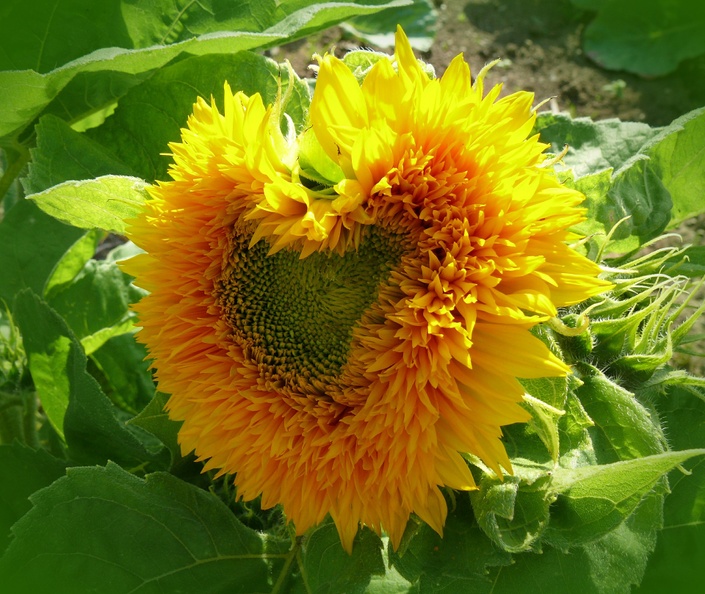Beyond the tales of gods and heroes, the Irish Festival of Lúnasa (Lughnasadh) is deeply rooted in the nurturing embrace of Mother Earth. The bountiful harvests of grain and the sacred rites performed during this time serve as a poignant reminder of our ancient connection to the land and the need to honour and protect it, just as the Tuatha Dé Danann and Fomorian child Lugh was protected by his foster mother Tailtiu, Queen of the Firbolg.
It can all get a bit complicated and overwhelming, however, so I’ve created a short ‘Cheat Sheet’ for those who want to step out of the Wiccan framework and work with the festivals and customs of Ireland, as they were for our ancestors.
As we walk hand in hand with the past, we’ll also keep in mind how modern practitioners of Irish Paganism can (and do) embrace Lúnasa in their lives. From open-air gatherings in sacred groves to virtual celebrations uniting seekers across continents, Lúnasa’s spirit knows no boundaries, bringing together kindred souls in harmonious reverence.
Please use the information provided below to ground your practice more solidly in authentic Irish customs and traditions, and begin to walk and work through the cycles of the Pagan Festivals.
Lúnasa Cheat Sheet
In Old Irish the name was Lugnasad, a combination of Lug (the god Lugh) and násad (a gathering or assembly that is festive or commemorative in nature).
In Modern Irish it’s Lúnasa, now meaning the month of August, and this is the name and spelling we prefer, given that Irish Gaeilge is a living breathing language and many of our traditions are still alive too!
>>> Download a Printable Version Here
When is Lúnasa?
- Last Sunday in July/ First Sunday in Aug – Garland Sun, Reek Sun, Fraughan Sun, Rock Sun, Height Sun, Mountain Sun.
- Lúnasa can be celebrated on 1st August, or on the ‘eve’ (last Sunday in July), or on the astro event (variable dates)… or really, any time in August?! Harvest would be dependent on weather.
To calculate the Lúnasa cross quarter date, find the midpoint between the summer solstice and the autumn equinox.
First, determine the exact dates and times for these two events (you can google that for your own location and time zone). Count the total number of days between them, then divide this number by two. Add this number of days to the date of the autumn equinox to find the cross quarter date for Lúnasa. Remember to adjust for leap years if necessary.
What Happened at Lúnasa?
It was a Free Day for Irish people, off work – climbing heights, mountains, gathering by water.
Associated in Irish Festival Traditions with:
- Fairs, Gatherings, Assemblies, Contracts, Courting, Hiring, Harvest, Offerings (garlands, flowers).
Traditional Activities
Driving Cattle, or Riding Horses, into water (lake, sea & river shores where assembly would be common). To cleanse and protect their health for the coming year – men would ride horses naked into water.
Scholars agree (mostly!) that this is an ancient custom, in line with other European folk traditions. Also, offerings of butter were given into the lakes or rivers at Lúnasa.
Main Themes
- Start of Harvest – lasts the entire season
- Community Gathering
- Offerings to the land (flowers, butter)
- Horse racing, riding – tribal sovereignty
- Games, skills, prowess, testing, winning
- Allegiances, trade, agreements, contracts
- Destructive Sky/Sun vs Balanced Light
- Feasting and Good Times! (… Hard Work)
Gods
Crom Dubh (sacrifices), Lugh (the ildánach, many skilled warrior and Tuatha Dé Danann king), his foster mother Tailtiu (Queen of the Firbolg, he held the Lúnasa Games in her honour).
THINGS TO DO AND THINK ABOUT…
- What are you Harvesting this year?
- Stocktake where your ‘hunger’ is currently, what are you short of?
- Plan for Winter
- Contracts & Agreements – review them all, are they still working for you?
- Invest (time, work)
- Build reserves, cash
- Games, Physical Activity, Swimming
- Walk and Climb
- Art, Crafts display
- Offerings, Gifts to Crom, Tailtiu, or Lugh
- Recognise the Land, spend some time observing the first fruits, and flowers
- Tailtiu, Cailleach, as sovereignty Goddesses – shaping the land
- Begin turning toward Balance (The Autumn Equinox in September).

>>> LEARN MORE IN CLASSES – https://IrishPagan.School/Lunasa
So let the journey begin, as we unlock the timeless secrets of Lúnasa and honor the cyclical dance of life and nature, reveling in the boundless magic of an ancient Fire Festival that continues to illuminate our souls to this very day.


Just to give thanks for the work you put in, it is appreciated. 💜
[…] celebrated on the first day of August, is also known as Lúnasa in the Irish language. It is one of the four cardinal festivals in the Celtic calendar. It […]
So clear and informative. Loved it.
With all the information available out there, I’m so glad the IPS is here to simplify and explain the reasons behind the celebration.
Fascinating ! Appreciate your wisdoms and enlightments ,keeping a stream of culture flowing !
Thank you very enjoyable read and clear information
[…] What are the cross-quarter days?These are the midpoints between the solstices and equinoxes, and they include Samhain, Imbolg, Bealtaine, and Lúnasa. […]
[…] 1st), marking the start of spring; Bealtaine (May 1st), celebrating the beginning of summer; Lúnasa (August 1st), indicating the start of the harvest season; and Samhain (November 1st), heralding the […]
[…] 🌻Seasonal Offer –> Click for the Lúnasa Fire Festival Cheat Sheet 🔥 […]
[…] is also associated with the harvest holiday of Lúnasa (Lughnasadh), particularly with the last Sunday in July which is also connected to the entropic figure of Crom […]
[…] Lúnasa (1st August) – The first harvest, a time of community and gratitude. […]